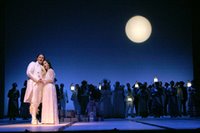
Starting with WebMonday's keynote in September the topic seems to get more attention every day (see also the discussion Markus Trapp's blog entries on Semantic Web and Web 2.0...). Web 2.0 almost seems to have reached the top in Gartner's hype cycle, and for sure you will have noticed that purchasing Web 2.0 companies has become rather expensive. Are we chasing a new bubble? But, that's another question that I won't discuss today.
I want to emphasize the thesis that for becoming a success 'Semantic Web' depends on 'Web 2.0 paradigms'.
Just follow this simple train of thoughts:
- The 'Semantic Web' assumes the web pages to provide semantic annotation, i.e. subjects discussed in the web page are linked to semantic metadata (ontologies) that provides well defined meaning to be processable by machines.
- The current Web comprises billions of web pages (at least more than 20 billion web pages seem to be indexed by Google).
- How to annotate billions of web pages?
(a) Currently, there's no way to annotate web pages automatically. A sound semantic annotation is only possible with true text understanding.
(b) Of course, authors might provide annotations for their own web pages. Even if there would be efficient tools for manual annotation, there are still billions of 'old' web pages that also have to be annotated.
(c) So why not engage all web users? Just think of wikipedia... If there would be tools for collaborative semantic annotation of web pages, the users are able to annotate the web pages that are of interest for them.
Just think of corrent collaborative tagging systems (CTS). Although its deficiencies collaborative tagging shows the way, how to provide metadata in a collaborative way.



